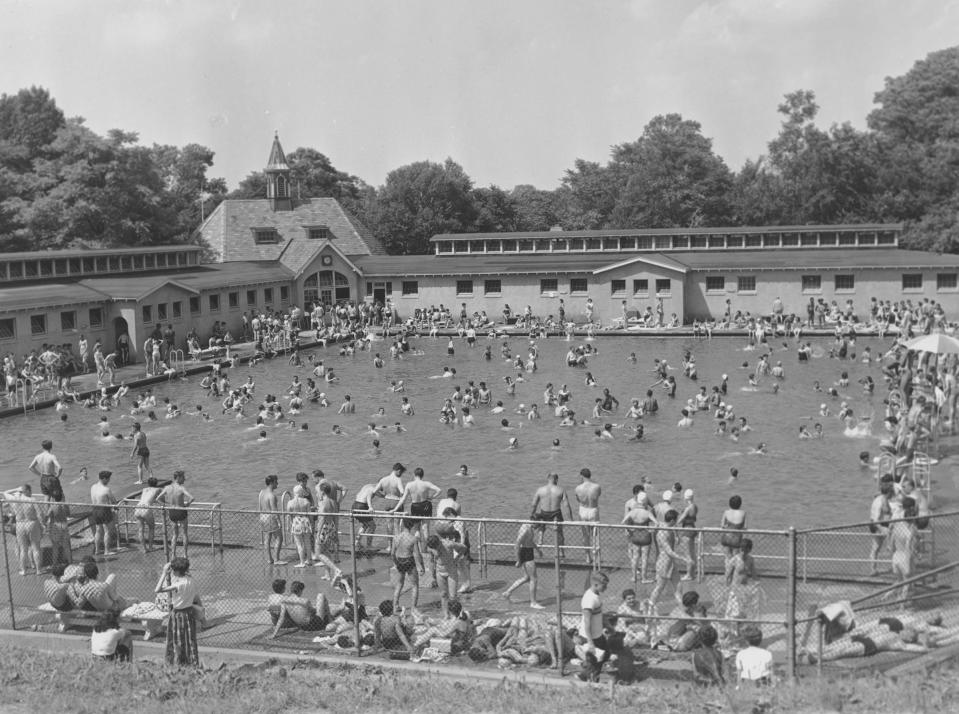From steam to nuclear: marking Indian Point Park's opening centennial
From the age of steam to the Atomic Age, Indian Point has changed a lot in the past hundred years.
On June 26, 1923, 100 years ago today, Indian Point Park opened. The Hudson River Day Line, which ran charter boats, bought the 320-acre property in Buchanan, realizing that owning and operating a fun park would add to their bottom line.
And day trippers escaping from the hot confines of New York City looking for relief realized Indian Point Park was a destination for just that, and for them, with its picnic, playgrounds and a dance hall. In 1929, a swimming pool and later amusement rides would follow.

Fast-forward to the 1940s and America's love of the automobile. People would go elsewhere other than Indian Point Park, and didn't need to rely on the Hudson River Day Line to get there either. It went out of business in 1948, sectioned, and auctioned the following year. Emanuel Kelmans bought 52 acres and reopened the park in 1950.
But the reborn full-fledged amusement park, with rides, arcades and concessions would last less than a decade. According to "Lost Amusement Parks of the Hudson Valley" by Wesley Gottlock and Barbara H. Gottlock, owner Emanuel Kelmans tired of running the seasonal business and sold it to Consolidated Edison in 1954. Con Ed was looking for property for a new power plant to meet the electricity demands of New York City − a plant originally intended to be either coal or oil burning. (The Indian Point power plant eventually occupied 239 acres.) Kelmans was allowed to hold events at Indian Point Park for two more years.
According to the Nuclear Regulatory Commission's history of the Indian Point Nuclear Power plants, the Atomic Energy Commission (whose regulatory functions went to the NRC upon the AEC's abolishment in 1975) didn't have any siting criteria for nuclear power plants. The first Indian Point nuclear plant was thus approved in 1955 despite being on an active earthquake line and being 24 miles away from New York City.
Not a chance: Indian Point shutdown was supposed to quiet anti-nuclear critics.
In 1962, Indian Point 1 was brought online. Four years later, a construction permit was issued for Indian Point 2 and that nuclear plant was brought online in 1973. It had been planned that the second plant be operational by 1969.
The last Indian Point plant was brought online in 1976. Three years after that, the Union of Concerned Scientists, the New York Public Interest Research Group and the WESPAC Foundation petitioned the NRC to decommission Indian Point 1 and to suspend operations at Indian Point 2 and 3 "citing over 60 unresolved safety deficiencies, including problem in plant design."
In the years that followed, Riverkeeper, the Hudson River environmental group, spearheaded several legal challenges against the plant.
In 2017, former Gov. Andrew Cuomo's administration brokered a deal with Entergy (which bought Indian Point reactors 2 and 3 in 2001), which led to what is now known as the Indian Point Energy Center's shutdown, with Cuomo citing fears of a nuclear mishap.
That shutdown happened in 2021. The cessation came also at a time when it was becoming more difficult for nuclear power to compete in an energy market flooded with cheap natural gas.
Related: Fossil fuel-burning plants cover power gaps. But they're foiling NY's clean energy plans.
Indian Point is currently undergoing decommissioning. Holtec International, a New Jersey-based decommissioning firm which owns the plant, plans to demolish the plant’s three reactors and other buildings. Holtec said it will take up to 15 years from the time of the sale - or by 2033 - to finish the job.
And with the decommissioning comes the presence of spent nuclear fuel in cement-and-steel canisters. That has left limited opportunities to redevelop the 240-acre Indian Point property along the shores of the Hudson River. Efforts to find a permanent underground repository for the nation’s nuclear waste have been unsuccessful.
This article originally appeared on Rockland/Westchester Journal News: Indian Point Park's opening centennial retrospective on then and now
